America’s passion for Hawaii began long ago, in the 1960s, after Hawaii became a state. Everything about Hawaii became romanticized with the help of movies, television, and marketing. From slack-key guitar, hula dancing, aloha wear, tikis, and ukulele, to everything Hawaiiana themed and more. It seemed like the infatuation would never stop in our lifetimes. And all that has arguably been great news for our state and its economy. But let’s fast forward to today before a glimpse back in the rearview mirror.
Hawaii’s role in new world travel.
Leadership in travel, at the moment, seems to be a concept entirely missing here in Hawaii, but it will come. It is definitely not emanating from some of the organizations marketing Hawaii, and it isn’t coming from the state legislature. Instead, it may need to be grassroots-inspired, and that, in fact, is what we are starting to see. And here’s how it might be a part of what’s changing.
Where does Hawaii go next?
As we’ve said previously, tourists have loved Hawaii to death for the past 60 years. Hawaii hasn’t figured out how to either keep pace with or manage tourism’s demand.
Frankly, there isn’t much more infrastructure in Hawaii today than there was back then. And yet, Hawaii has more than five times the number of visitors compared with 60 years ago. Something has to change.
In places like Hanauma Bay, Hana, Kauai, and most all of Hawaii’s most desirable destinations, over-tourism took a significant toll on the environment, the people of Hawaii, and the visitors. Quality of life and environmental focus is essential and will not go away. Not in Hawaii and not in other global destinations that are overtouristed.
How many visitors can Hawaii handle?
Is the current ten million too many? What about the projected fifteen million; how can Hawaii cope? Obviously, the state will never keep up; if it did, it might look more like Southern California than Hawaii. So a move away from visitor growth to visitor value is also inevitable.
Making tourism more attractive to Hawaii residents once again.
Hawaii must see a way forward where visitors, residents, and tourism come together. In part, it’s a concept called “tourist attractiveness,” which seeks ways to improve residents’ feelings about Hawaii tourists.
There will be a promising future for Hawaii travel, but this time it will be more of a co-creation for the benefit of all, including, first and foremost, Hawaii residents, visitors, and the tourism industry. Previously, residents had little input into Hawaii’s most important industry.
Remove the perception that Hawaii is anti-visitor.
Hawaii needs to acknowledge that tourists are good and beneficial to our economy, even if, during revenge travel, some of them looked not to be. Hawaii must start seeing visitors more as a part of Hawaii to be able to better work with them. Residents and visitors are responsible for achieving a more harmonious Hawaii and focused on human relations as the main point of tourism. That is a situation where residents and visitors co-exist more peacefully and for mutual benefit.
Enough with the discriminatory fees.
Another thing that will help is for Hawaii to manage escalating vacation costs within its purview and our visitors’ perceptions about those. Also, how about applying fees appropriately and not in inconsistent and discriminatory ways that damage the state’s relations with its visitors?
Hawaii’s golden era. Is it really over?
It reigned for sixty years and was fabulous for many, but not all. Hawaii businesses thrived, and visitors loved every minute of it. The days of a cheap Hawaii vacation, which had been quickly ending anyway, suddenly ended abruptly. At least that part will not be returning.
Moreover, could we say that it is not Hawaii’s golden era but rather travel’s golden era that has gone by the wayside? We find that the same things are true traveling outside of Hawaii, where costs have escalated enormously since before Covid and are frankly shocking. It’s a global phenomenon.
Back in the day, Elvis and jets set Hawaii on fire.
Hawaii tourism, as we know it today, began with jet travel. The Age of Hawaii jet travel is synonymous with Pan Am, which began flying jets to Honolulu just one month after statehood. Jets cut travel time to Hawaii, bringing fewer fares and more passengers than ever before possible. Even earlier, when Pan Am started Hawaii flights in the 30s, it was an exclusive, luxury experience unavailable to most people. Before jet travel, flying to Hawaii cost roughly today’s equivalent of $4,000.
Elvis, the “King of Rock and Roll,” was and remains one of Hawaii’s most significant recent cultural and marketing icons. “Everyone who knew him says there were only two places Elvis felt at home, and they were Memphis and Hawaii,” said Elvis biographer Jerry Hopkins. “Blue Hawaii” filmed at Kauai’s Coco Palms Resort, “Girls! Girls! Girls!,” and “Paradise, Hawaiian Style,” are the three Elvis Hawaii movies.
Not far behind in terms of media-based influence stands television and Hawaii Five-O. That long shelf-life series ran from 1968 to 1980 before reruns. An updated series lasted ten more seasons starting in 2010. It was the longest-running, most successful police drama.
Aloha wear remains, perhaps, Hawaii’s best free advertising.
Who needs HTA and its odd marketing partners? Aloha wear first appeared as early as the 1920s and was based on kimono fabrics. It migrated to the mainland by the 1930s, and the rest is history. Wearing aloha wear was associated with an aspiration to Hawaii’s cool and chic allure. It was made famous by surfing legend Duke Kahanamoku, among others. Aloha wear was thought to have helped the Hawaii travel boom enormously. And that has not diminished to this day.
The unending draw of Pearl Harbor/Arizona Memorial.
The Arizona Memorial was completed twenty years after WWII at Pearl Harbor to honor the 2,500 who died during those attacks. The memorial became an instant draw and is still among today’s most popular attractions.
Surf Culture and the Beach Boys to this day.
With jet travel on, the joining of Hawaii surf culture with travel was imminent. The Beach Boys aided that and their iconic “Let’s go surfing now, everybody’s learning how.” The Hawaii surf culture rocked Southern California. Music from Hawaii became all the rage.
Hawaii music calls visitors to the islands.
That started long before air travel. Hawaiian music was the top genre on the mainland one hundred years ago. Ukulele and Hawaii slack-key included modern, traditional, native, popular, and folk genres. It has never stopped.
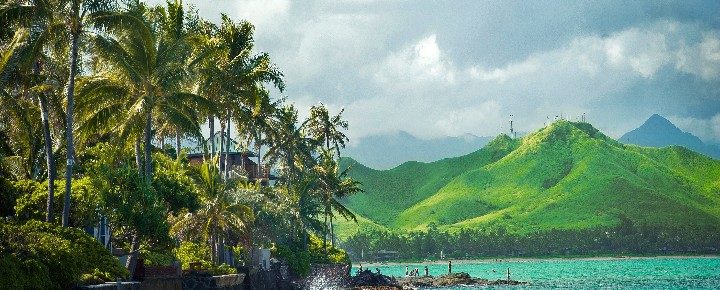
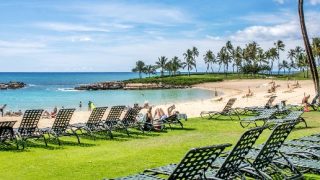
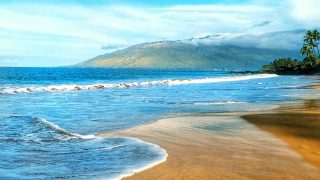
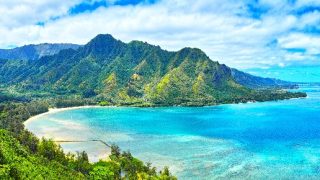
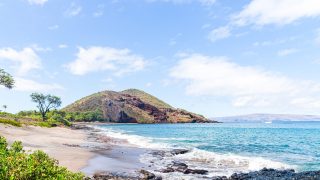
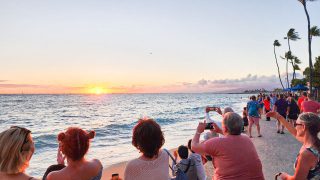
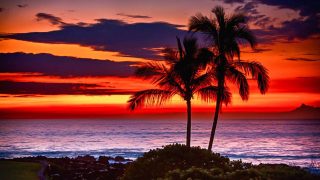
International Market Place… that’s what it’s called. Not the same in the least. Maybe if Hawaii went back to it’s old ways, the people that lived it then would still be the same ones visiting and respecting it now. I’ve noticed a whole different type of people and visitor there now. They’re rude, arrogant and pushy. My mom lived on the Big Island for 15 years. She was even a bit disappointed the last time she visited. Things change, but to lose the authenticity that is original to Hawaii, isn’t ideal. Same as closing up original awesome places like that of Coco Palms. I would give anything within reason, to go to a place like that and experience the real Hawaii.
Hawaii is not the same Hawaii as it was in the 70’s,80’s and even the 90’s. It is now catering to the rich with all the ridiculous high end stores instead of the authentic to Hawaii only shops. Rich stores means rich purple, which many of the long standing visitors are not. The Kings Village shops and their performances of the changing of the guards were so amazing and fun to watch. Then they ruined so much of the shopping there. They took the Dukes lane out and changed the other one (can’t recall name) and made it all high end, also. If all you want is rich people there, then that’s fine. We’ll find somewhere else to go. The main reason I go there is to visit my mom n step dad at their graveside, but we always made a trip out of it.
I have been visiting Hawaii since 1977. We visited January 2023. From our arrival at the airport at in Maui. We noticed the more welcome attitude toward visitors. Even with all the traffic congestion and the non-stop development we had a great visit LOL I must say the airfare was cheap but the price for 2 weeks and a condo maxed out our budget must be extremely tough to raise a family in Hawaii
Maui no ka ‘oí.
Wow,
I have been reading a lot of the posts here and am flabbergasted to the content. I lived on Maui in the mid 80s and yes saw the prices for rent and homes skyrocket. I was appalled at the time as I saw so many friends whose families had lived on Maui have to move. It was horrific for them leaving the island. Most tourists never will understand the hardship for the locals unless you have lived there and shared in seeing resources and the land be violated. That’s not to say that all tourists are bad either but even a few can harm.
If there was a simple answer I wish I knew but there isn’t. What tourists can do is understand that this is home to a lot of locals from the very beginning of their family. Just be respectful.
I’ve been to Hawaii many many times. I’m probably never coming back. I no longer feel welcome. I have stayed in hotel rooms at most of the major resorts, rented houses and condo’s from just two of us to extended family stays for 15- on all the islands. I always loved the Aloha spirit – be it at a Four Seasons or a air b and b off the beaten path. Last trip – February 2022 I felt like a cash cow. An unwelcome cash cow. It wasn’t the same experience at all. The ugly American at home in America.
Return the land to the Hawaii people
Best of Hawaii is away from the crowds, in nature and the smaller, older towns.
I totally agree. Living within the culture and among the holiness of the aina is one of my greatest joys in life.
Legalize weed & the state could generate millions. We went to various parks where upkeep, facilities, & staff were sorely lacking. What a shame! Bathooms we’re closed, non-existent staff, & crumbling facilities. Went to Beach 69 at Hapuna, only 1 urinal for a huge beach & full pkng. lot, for ej.
Thats my beef too, the terrible bathrooms part. Increasing taxes wont help though if funds get diverted elsewhere.
Only thing i can think of is Island is a county and here in Oregon counties are underfunded and the State has the money.
Are the various beaches state facilities or county? Everyone does people have to go somewhere either in a bathroom or behind the bushes.
I think we need to pay the locals better. It’s amazing how much more interested people are in local environmental activism when they’re well fed and not overtired from working 2 jobs. They might even afford trips to the botanical gardens and such. Similarly, the abandoned appliance on Farrington (or ka’awali’i gulch, for that matter) referenced above might have found a home at the free transfer station if someone had had the time to take it there.
I went to college as an exchange student on the big island. 1976 I’m sure it’s changed. I want to come back but will it make me sad ? Hope and pray they the people can keep growth in check. One day I hope to return not as a tourist but a friend of the island a traveler. Hold on to your history and culture.
Maybe for the better now there is 3 locations for Gypsea Gelato. Captain Cook, Kona, and Waikola. Also OBISI in Waikola.
Lost Kapaho to lava that was a bummer. Big Island got bigger.
I just spent over a week on Oahu and intentionally stayed on the north shore to get away from the hustle and bustle of Waikiki and Honolulu.
Unfortunately, the traffic all over the island is ridiculous. I live in Houston, Texas and the traffic here isn’t as bad and that’s saying a lot!
Plus, lots of the locals are not very accommodating to tourists. I got a vibe from many locals at retail establishments that they just aren’t happy about all of the tourists invading their island.
I will not be visiting Oahu in the future but I will be visiting Hawai’i Island (Big Island). I have had a much better experience there!
With all due respect, Houston and Harris County (I grew up there and still visit frequently) has the worst gridlock traffic of any major metropolitan area in these United States. The comparison is absolutely invalid.
Hawaii will pay for its constant desire to push tourist away. Don’t come crying for people to come back when businesses start to shutter. Hotel costs are outrageous and anyone paying 500+ per night is not smartly spending their money in Hawaii when they really don’t want you there to begin with. Let’s all find new locations to vacation in.
We just Mauna Lani for $700@ night. I dont mind paying less but it was a 3 bedroom. If was three couples at nowheresville USA at a Best Western at $233 @ for each room would seem reasonable. Condo has large kitchen large lani, living room all better than a motel room and you are in Hawaii. Win win
Not if it’s handled properly. Fewer tourists who spend more would do the trick. BTW, I find it amusing that people who complain about Hawaii’s policies always predict that This is going to cause Hawaii tourism to die and it really . But, it just continues to grow. for example, Jan tourism was up 38% vs last Jan. and spending was up as well.
LOL, agreed. They sound like jilted lovers who are threatening to leave. “You’ll see, when I leave, you’re really gonna miss me and you’re gonna want me back, but it’s gonna be too late, I’m gonna find someone else, you’ll see, you’ll regret dumping me!” LOL…
Not only that, but they act as if they have some god given right to a Cheap Hawaii vacation. Then when it’s not cheap, they do the jilted lover bit.